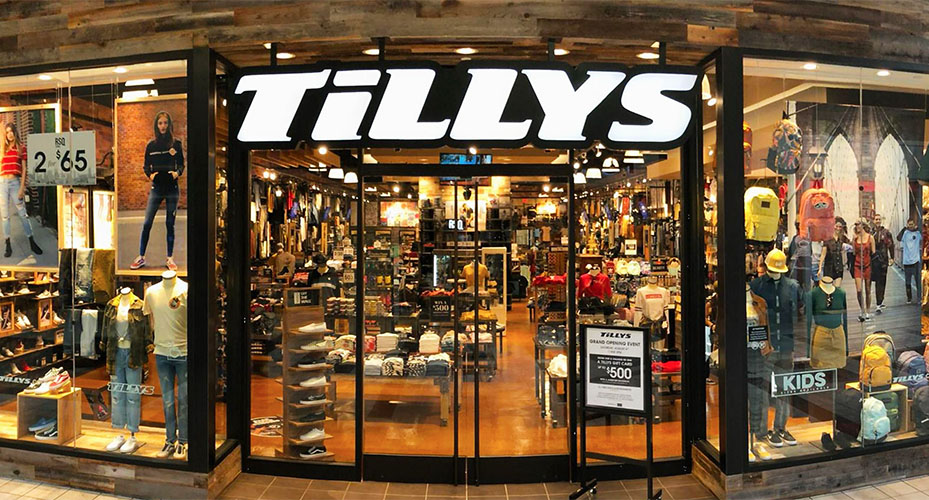Tilly’s, Inc. saw total net sales decline 40.7 percent the first quarter of fiscal 2020 ended May 2 as store closures halfway through the period cut into sales for the period.
Total net sales were $77.3 million compared to $130.3 million in the prior-year quarter. The company temporarily closed all of its 239 stores on March 18, 2020 in response to the COVID-19 pandemic. All stores remained closed to the public for the final 45 days of the 91-day fiscal quarter including during the peak weeks of the quarter surrounding normal school spring breaks and Easter. The resulting net sales from physical stores for the first quarter of fiscal 2020 were $47.0 million, a decrease of 57.5 percent compared to $110.6 million for the first quarter of fiscal 2019.
“The first quarter was severely impacted by COVID-19 resulting in the temporary closure of all 239 of our stores halfway through the quarter and the painful decision to furlough 91 percent of our employee population,” commented Ed Thomas, President and CEO. “So much remains unpredictable at this time, but we are thankful that we have recently been able to bring some of our people back to work with the reopening of 160 of our stores thus far. We remain committed to the health and safety of our employees, customers and communities as we resume operating our stores.”
The company ended the quarter with 239 total stores, including one RSQ-branded pop-up store, all of which were closed as of the end of the first quarter of fiscal 2020, compared to 229 total stores, including three RSQ-branded pop-up stores, last year.
…
The company’s e-commerce business continued to operate throughout the first quarter and increased significantly following the closure of the company’s stores. Net sales from e-commerce for the first quarter of fiscal 2020 were $30.3 million, an increase of 54.2 percent compared to approximately $19.7 million for the first quarter of fiscal 2019.
Gross profit was $1.6 million, or 2.1 percent of net sales, compared to $35.7 million, or 27.4 percent of net sales last year. Product margins decreased 770 basis points as a percentage of net sales primarily due to an estimated inventory valuation reserve of $4.7 million and increased markdowns. Occupancy costs deleveraged 1,250 basis points as a percentage of net sales despite being $0.5 million lower than last year, primarily due to the significant net sales decline resulting from the store closures noted above. Distribution costs deleveraged 440 basis points as a percentage of net sales primarily due to an increase in e-commerce shipping charges of $0.9 million resulting from a greater volume of e-commerce orders. Buying costs deleveraged 70 basis points as a percentage of net sales despite being $0.1 million below last year.
Selling, general and administrative expenses (“SG&A”) were $30.0 million, or 38.8 percent of net sales, compared to $35.5 million, or 27.3 percent of net sales, last year. The $5.5 million decrease in SG&A was primarily due to reduced store payroll expenses of $4.9 million resulting from furloughing all non-management store associates in connection with the store closures noted above, as well as other reductions in most other expenses. These expense decreases were partially offset by higher e-commerce fulfillment and marketing expenses of approximately $1.3 million associated with significant e-commerce net sales growth compared to last year and non-cash store asset impairment charges of $0.3 million resulting from the impact of COVID-19 on certain of our stores.
Operating loss was $28.4 million, or 36.7 percent of net sales, compared to operating income of $0.1 million, or 0.1 percent of net sales, last year. The decrease in operating results was directly attributable to the impacts of COVID-19 on its business, including as noted above.
Income tax benefit was $10.6 million, or 37.9 percent of the pre-tax loss, compared to income tax expense of $0.3 million, or 30.6 percent of pre-tax income last year. Income tax (benefit)/expense for both periods includes certain discrete items associated with employee stock-based award activity. The increase in the effective income tax rate for fiscal 2020 is primarily due to the anticipated benefit from the Coronavirus Aid, Relief and Economic Security Act enacted on March 27, 2020 which provides for net operating losses in fiscal 2020 to be carried back to earlier tax years with higher tax rates than the current year.
Net loss was $17.4 million, or 59 cents per share, compared to net income of $0.7 million, or 2 cents per diluted share, last year.
…
Balance Sheet and Liquidity
As of May 2, 2020, the company had $111.1 million of cash and marketable securities, including $23.7 million borrowed under its credit facility and an aggregate of $13.3 million of withheld store lease payments for the months of April and May 2020. Excluding the cash borrowed under its credit facility and withheld store lease payments, the company’s remaining cash and marketable securities would have totaled $74.1 million as of May 2, 2020, compared to $109.8 million with no borrowings under its credit facility and no withheld lease payments as of May 4, 2019, the end of the first quarter of fiscal 2019. The company ended the first quarter of fiscal 2020 with merchandise inventories per square foot up 10.8 percent compared to last year, primarily due to the store closures noted above. The company canceled a substantial majority of its originally planned inventory receipts for the months of April through June 2020, and has significantly reduced its future inventory commitments through the remainder of fiscal 2020. As a result, the company entered fiscal June 2020 with inventories per square foot down 10.5 percent compared to last year.
Fiscal 2020 Second Quarter Store Re-openings And Net Sales Update
During the second quarter of fiscal 2020 ending August 1, 2020, in accordance with the latest guidelines from local, state and federal governments and health organizations, and with new health and safety protocols in place, including significant restrictions on customer traffic, the company has reopened 160, or 67 percent, of its total 239 stores as of June 2, 2020.
Since their respective reopening dates and through June 1, 2020, compared to the respective comparable prior year periods, collectively, customer traffic in the reopened stores has decreased by 34 percent and comparable store net sales in the reopened stores have increased by 1.2 percent. Individual comparable store net sales results since their respective reopening dates have ranged from a decrease of 91 percent to an increase of 160 percent, cumulatively, with 78 stores reporting cumulative comparable store net sales increases and 73 stores reporting cumulative comparable store net sales decreases.
Total comparable store net sales for the second quarter of fiscal 2020 through June 1, 2020, including e-commerce and periods for which physical stores were temporarily closed as a result of the COVID-19 pandemic, were $28.2 million, a decrease of $13.6 million or 32.6 percent, compared to $41.8 million for the comparable period last year. Comparable store net sales from physical stores were $8.2 million, a decrease of $27.7 million or 77.1 percent compared to $35.9 million for the comparable period last year. Net sales from e-commerce were $20.0 million, an increase of $14.0 million or 236.8 percent compared to $5.9 million for the comparable period last year.
As of June 1, 2020, the company had $113.9 million of cash and marketable securities, including $23.7 million borrowed under its credit facility and an aggregate of $15.0 million of withheld store lease payments. Excluding the cash borrowed under its credit facility and withheld store lease payments, the company’s remaining cash and marketable securities would have totaled $75.2 million as of June 1, 2020, compared to $113.1 million with no borrowings under its credit facility and no withheld lease payments as of June 3, 2019.
Tilly’s management said they cannot at this time predict with any certainty what future customer traffic or comparable store net sales results will be, the pace at which additional stores may be able to reopen, or whether re-opened stores will be allowed to remain open in the future, nor can the company ensure that the foregoing store reopening results will be indicative of future performance in these uncertain times.
Photo courtesy Tilly’s















